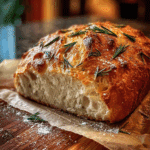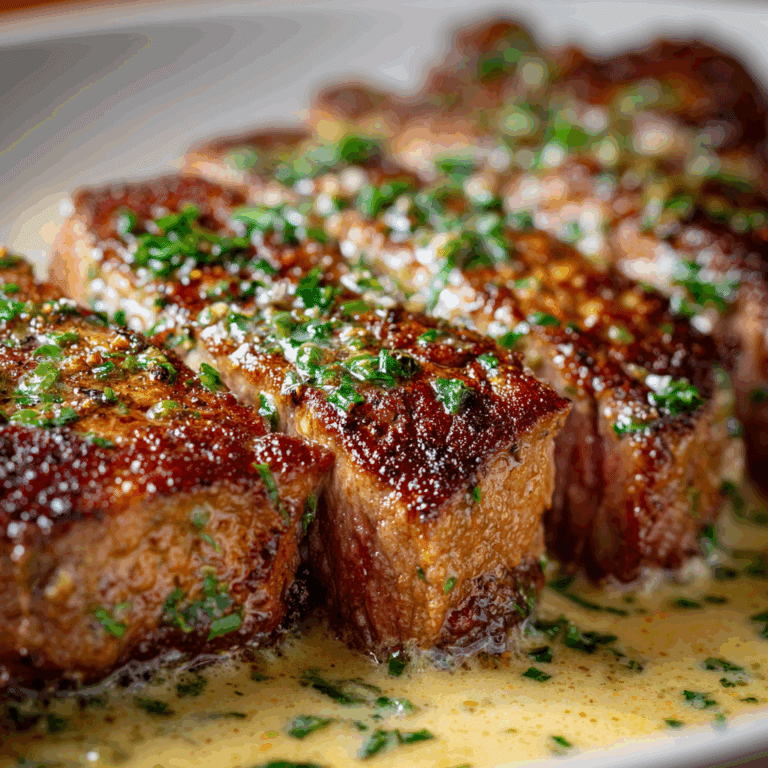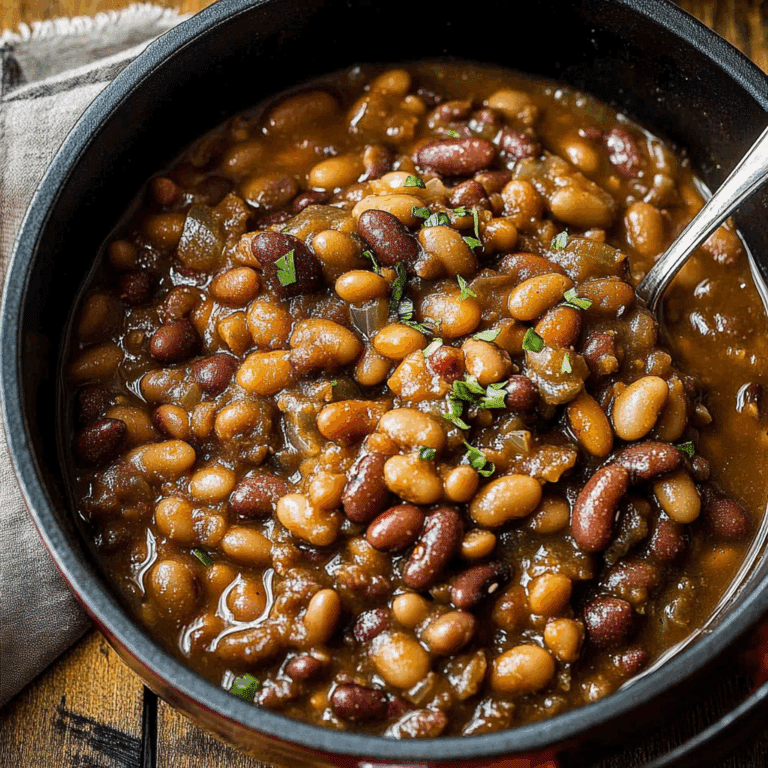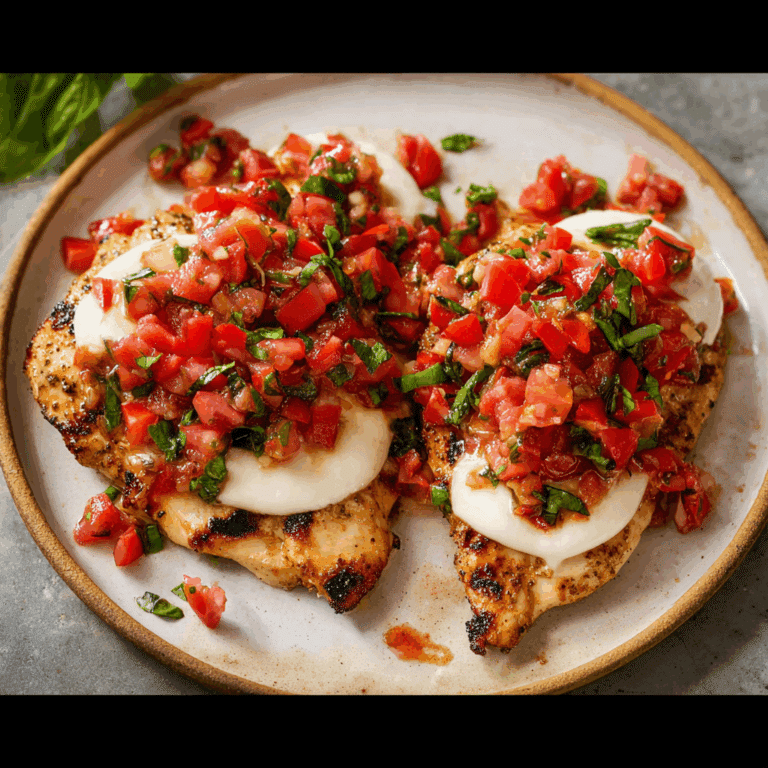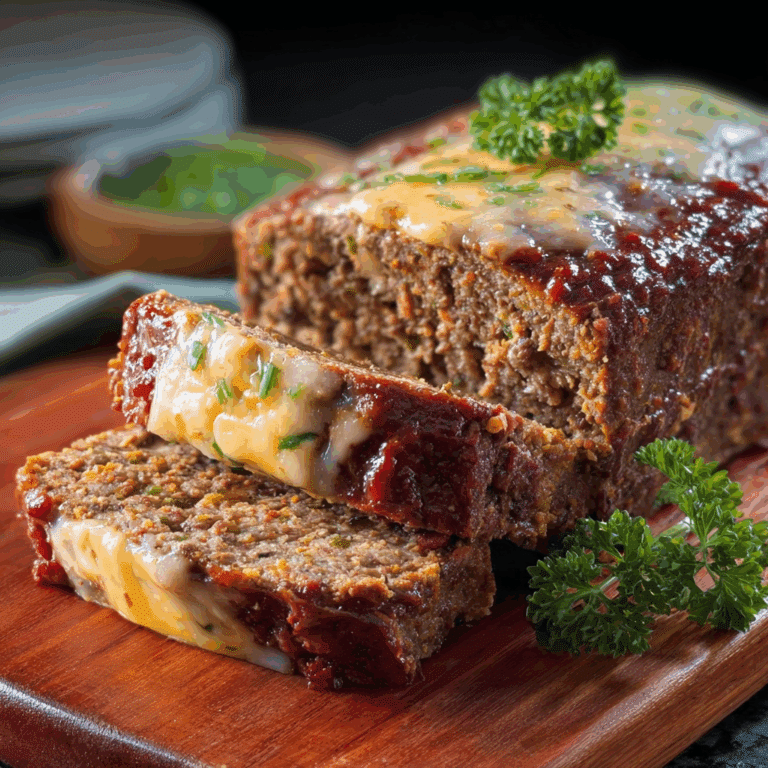Why No Knead Rosemary Bread Is a Must-Try Recipe
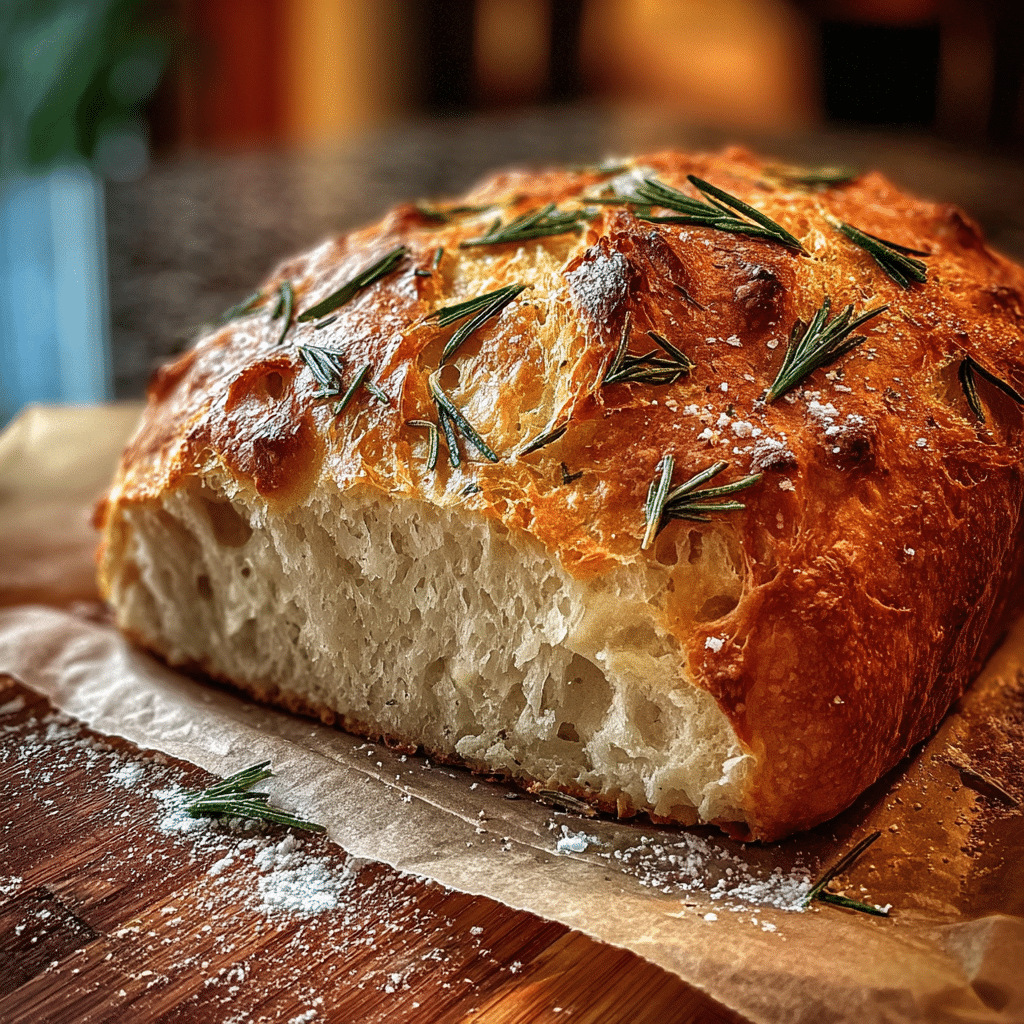
If you’ve been searching for a delicious, easy, and impressive homemade bread recipe, look no further than the No Knead Rosemary Bread. This recipe combines the convenience of minimal prep and hands-off time with the aromatic flavor of fresh rosemary, making it perfect for beginners and bread lovers alike. You’ll love how effortlessly this bread turns into a crusty, golden artisan loaf that fills your kitchen with inviting smells and satisfies every slice with tender, flavorful crumb.
Why You’ll Love This Recipe
- Effortless preparation: No kneading means no fuss—just mix the ingredients and let the dough do the work.
- Bold aroma and flavor: Fresh rosemary infuses the bread with an irresistible earthy, herbaceous note.
- Artisan quality: The slow rise creates an airy crumb and crust that rivals bakery loaves.
- Perfect for beginners: Minimal handling makes it accessible for even the most novice bakers.
- Versatile serving options: Enjoy it with soups, salads, or as a savory snack.
Ingredients You’ll Need
Each ingredient in this No Knead Rosemary Bread recipe plays a crucial role, from developing flavor and texture to creating that perfect golden crust. Don’t fret about exotic items—these are simple pantry staples combined with fresh rosemary to elevate the loaf.
- All-purpose flour: Provides the structure and softness needed for a tender crumb.
- Instant yeast: Ensures a reliable rise without needing activation time.
- Coarse salt: Enhances flavor and strengthens the gluten network during fermentation.
- Warm water: Activates yeast and hydrates the flour essential for dough formation.
- Fresh rosemary: Chopped and added to infuse woodsy, aromatic notes throughout the bread.
- Olive oil (optional): Adds moisture and a hint of fruity richness to the crust and interior.
Variations for No Knead Rosemary Bread
Feel free to customize your No Knead Rosemary Bread to suit your taste buds or dietary needs. This recipe is very adaptable, allowing you to swap or add ingredients without losing its simplicity or charm.
- Garlic infusion: Add minced garlic or garlic powder to the dough for an extra savory boost.
- Cheese addition: Fold in shredded Parmesan or sharp cheddar for cheesy, melty pockets.
- Gluten-free tweak: Use a gluten-free flour blend suitable for bread baking to enjoy a similar texture.
- Seed topping: Sprinkle sesame, poppy, or sunflower seeds before baking for crunch and extra nutrition.
- Herb mix: Combine rosemary with thyme, oregano, or basil for a more complex herb profile.

How to Make No Knead Rosemary Bread
Step 1: Mix Your Ingredients
In a large bowl, combine flour, salt, and instant yeast. Add chopped fresh rosemary to the dry mix to evenly distribute its fantastic flavor. Pour in warm water and olive oil (if using), stirring until a rough, sticky dough forms.
Step 2: Let the Dough Rise
Cover the bowl with plastic wrap or a damp towel and let the dough rest at room temperature for 12 to 18 hours. This slow fermentation process is key to developing flavor and structure without kneading.
Step 3: Shape and Proof
Lightly flour a work surface and gently turn the dough out. Fold the dough over itself a couple of times for shape, then place it seam-side down into a floured proofing basket or bowl lined with a tea towel. Cover again and let rise for about 1 to 2 hours until puffy.
Step 4: Preheat and Prepare to Bake
About 30 minutes before baking, preheat your oven to 450°F (230°C) with a Dutch oven or heavy oven-safe pot inside. This mimics the steam environment of professional bread ovens for that crisp crust.
Step 5: Bake Your Bread
Carefully transfer the dough into the hot Dutch oven, score the top with a sharp knife to control expansion, then cover with the lid. Bake covered for 30 minutes, then remove the lid and bake an additional 15-20 minutes to achieve a golden, crunchy crust.
Step 6: Cool and Enjoy
Transfer the loaf to a wire rack and let it cool completely before slicing. This resting period allows the crumb to set fully and enhances flavor and texture.
Pro Tips for Making No Knead Rosemary Bread
- Use a kitchen scale: Measuring flour by weight ensures accuracy and consistent results.
- Fresh rosemary is key: Use fresh herbs for the brightest and most pronounced flavor.
- Don’t skip the long rise: Patience is rewarded with better taste and structure.
- Handle dough gently: Preserve the air bubbles by folding lightly instead of aggressive kneading.
- Use a Dutch oven: It traps steam for a crisp crust and a soft crumb inside.
- Score before baking: Helps control the loaf’s expansion and adds a decorative touch.
How to Serve No Knead Rosemary Bread
Garnishes
Sprinkle freshly chopped rosemary or a light drizzle of good olive oil on warm slices for an extra flavor boost. You can also rub a garlic clove on the crust for a simple, fragrant touch.
Side Dishes
This bread pairs perfectly with hearty soups like tomato basil or butternut squash, as well as fresh salads or creamy cheese spreads for a delightful, balanced meal.
Creative Ways to Present
Turn your No Knead Rosemary Bread into bruschetta by topping toasted slices with diced tomatoes, basil, and mozzarella or slice it thick and serve alongside a charcuterie board for a rustic appetizer.
Make Ahead and Storage
Storing Leftovers
Keep leftover bread in a paper bag or wrapped in a clean kitchen towel at room temperature for up to two days to maintain crust crispness and interior freshness.
Freezing
Wrapped tightly in plastic wrap and then foil, this bread freezes well for up to three months. Thaw at room temperature before reheating.
Reheating
Revive day-old bread by sprinkling it lightly with water, then warming it in a 350°F (175°C) oven for 10-12 minutes to refresh the crust and crumb.
FAQs
Can I use dried rosemary instead of fresh?
Yes, but use about one-third of the amount as dried herbs are more concentrated; fresh rosemary offers a brighter, more vibrant flavor.
Is no knead bread healthier than kneaded bread?
No knead bread uses the same basic ingredients; the difference lies in preparation, not nutritional content. However, longer fermentation can improve digestibility.
What if my dough doesn’t rise?
Check that your yeast is fresh and the water temperature is warm but not hot. Room temperature also affects rising time, so try to proof dough in a warm spot.
Can I make this bread without a Dutch oven?
Yes, but results may vary; place a tray of water in the oven to create steam and help develop a crust, and bake on a preheated baking sheet or stone.
How long does this bread stay fresh?
Best enjoyed within two days at room temperature; after that, it can become stale but reheating can restore freshness.
Final Thoughts
There’s something truly magical about pulling a warm loaf of homemade No Knead Rosemary Bread from your oven—a satisfying aroma, an enticing crust, and a soft interior all come together without any kneading stress. This recipe perfectly combines simplicity and flavor, making it a must-try for anyone wanting to elevate their baking game effortlessly. Give it a whirl, invite some friends or loved ones, and watch this humble bread create big memories.
Related Posts
- Easy Baked Sweet and Sour Chicken Recipe
- Why Cream Cheese Chicken Enchiladas Are Irresistible
- How to Make the Best Pepperjack Meatloaf Recipe
No Knead Rosemary Bread
No Knead Rosemary Bread is a simple and flavorful homemade artisan bread recipe featuring fresh rosemary. With minimal prep and no kneading required, this bread develops a crusty golden exterior and tender, aromatic crumb through a slow fermentation process. Perfect for beginners and bread enthusiasts, it pairs wonderfully with soups, salads, or as a savory snack.
- Prep Time: 15 minutes
- Cook Time: 45 minutes
- Total Time: 13 to 18 hours (including rising time)
- Yield: 1 loaf (about 8 servings) 1x
- Category: Appetizers
- Method: Baking
- Cuisine: American
- Diet: Vegetarian
Ingredients
Main Ingredients
- 3 cups (360g) all-purpose flour
- 1/2 teaspoon instant yeast
- 1 1/4 teaspoons coarse salt
- 1 1/2 cups (360ml) warm water
- 2 tablespoons fresh rosemary, chopped
- 1 tablespoon olive oil (optional)
Instructions
- Mix Your Ingredients: In a large bowl, combine the all-purpose flour, coarse salt, and instant yeast. Add the chopped fresh rosemary to the dry ingredients and stir to distribute evenly. Pour in the warm water and olive oil (if using) and stir until a rough, sticky dough forms.
- Let the Dough Rise: Cover the bowl with plastic wrap or a damp towel. Allow the dough to rest at room temperature for 12 to 18 hours. This long, slow fermentation develops flavor and structure without the need for kneading.
- Shape and Proof: Lightly flour a work surface and gently turn the dough out. Fold the dough over itself a couple of times to shape it. Place the dough seam-side down into a floured proofing basket or a bowl lined with a tea towel. Cover and let rise again for 1 to 2 hours until the dough is puffy.
- Preheat and Prepare to Bake: About 30 minutes before baking, preheat your oven to 450°F (230°C) with a Dutch oven or a heavy oven-safe pot inside. This creates the steam environment needed for a crispy crust.
- Bake Your Bread: Carefully transfer the dough into the preheated Dutch oven. Score the top with a sharp knife to control expansion. Cover with the lid and bake for 30 minutes. Then remove the lid and bake for an additional 15 to 20 minutes until the crust is golden and crunchy.
- Cool and Enjoy: Transfer the bread to a wire rack and let cool completely before slicing. Cooling allows the crumb to set fully and enhances the bread’s flavor and texture.
Notes
- Use a kitchen scale to measure flour accurately for consistent results.
- Fresh rosemary is preferred for the best aroma and flavor.
- Do not skip the long rise; it improves taste and texture significantly.
- Handle the dough gently to preserve air bubbles by folding lightly rather than kneading aggressively.
- Using a Dutch oven traps steam, which is crucial for a crisp crust and soft crumb.
- Score the dough before baking to control expansion and add a decorative touch.
Nutrition
- Serving Size: 1 slice (approximately 1/8 loaf)
- Calories: 150
- Sugar: 0.2g
- Sodium: 220mg
- Fat: 3g
- Saturated Fat: 0.4g
- Unsaturated Fat: 2.5g
- Trans Fat: 0g
- Carbohydrates: 28g
- Fiber: 1.5g
- Protein: 5g
- Cholesterol: 0mg
Keywords: no knead bread, rosemary bread, artisan bread, easy homemade bread, no knead rosemary bread, beginner bread recipe
